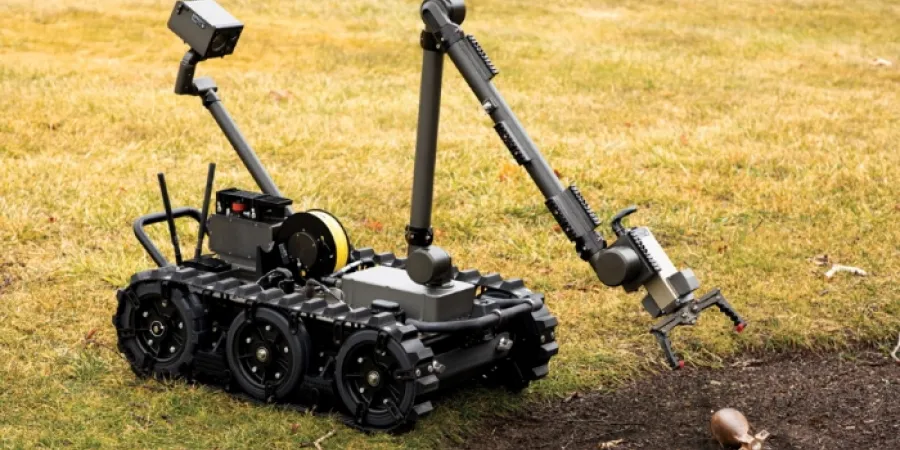U.S. military orders 250 more FLIR Centaur ground robots
Over the last year, FLIR has won multiple orders totaling roughly $97 million for more than 750 Centaur systems from the Army, Air Force, Navy, and Marine Corps
Eyal Boguslavsky
| 17/11/2020
Industrial technology company FLIR Systems announced this week that the U.S. Army, Air Force, and Navy have collectively ordered more than 250 additional FLIR Centaur unmanned ground vehicles, worth a combined $32 million. Deliveries are expected to begin in the first quarter of 2021.
Over the last year, U.S.-based FLIR has announced multiple orders totaling roughly $97 million for more than 750 Centaurs from the Army, Air Force, Navy, and Marine Corps. Explosive Ordnance Disposal (EOD) teams across all services will use the Centaur to assist in disarming improvised explosive devices and unexploded ordnance, and similar hazardous tasks. Operators can quickly attach different sensors and payloads to the robot for other missions, including chemical, biological, radiological and nuclear (CBRN) threats.
In 2017, the U.S. Army selected the medium-sized Centaur robot as its MTRS Inc II solution. FLIR is delivering systems to the Army under that multi-year program of record, which upon award was valued at more than $150 million, including options. These latest orders fall under the current ceiling. Since then, other U.S. military branches have opted to deploy the Centaur to their EOD teams as a new or replacement ground robot system.
The Centaur is a medium-sized unmanned ground vehicle that provides a standoff capability to detect, confirm, identify, and dispose of hazards. Weighing roughly 160 pounds, the open-architecture robot features an advanced EO/IR camera suite, a manipulator arm that reaches over six feet, and the ability to climb stairs. Modular payloads can be used for CBRN detection and other missions.
Over the last year, FLIR has won multiple orders totaling roughly $97 million for more than 750 Centaur systems from the Army, Air Force, Navy, and Marine Corps
Industrial technology company FLIR Systems announced this week that the U.S. Army, Air Force, and Navy have collectively ordered more than 250 additional FLIR Centaur unmanned ground vehicles, worth a combined $32 million. Deliveries are expected to begin in the first quarter of 2021.
Over the last year, U.S.-based FLIR has announced multiple orders totaling roughly $97 million for more than 750 Centaurs from the Army, Air Force, Navy, and Marine Corps. Explosive Ordnance Disposal (EOD) teams across all services will use the Centaur to assist in disarming improvised explosive devices and unexploded ordnance, and similar hazardous tasks. Operators can quickly attach different sensors and payloads to the robot for other missions, including chemical, biological, radiological and nuclear (CBRN) threats.
In 2017, the U.S. Army selected the medium-sized Centaur robot as its MTRS Inc II solution. FLIR is delivering systems to the Army under that multi-year program of record, which upon award was valued at more than $150 million, including options. These latest orders fall under the current ceiling. Since then, other U.S. military branches have opted to deploy the Centaur to their EOD teams as a new or replacement ground robot system.
The Centaur is a medium-sized unmanned ground vehicle that provides a standoff capability to detect, confirm, identify, and dispose of hazards. Weighing roughly 160 pounds, the open-architecture robot features an advanced EO/IR camera suite, a manipulator arm that reaches over six feet, and the ability to climb stairs. Modular payloads can be used for CBRN detection and other missions.



